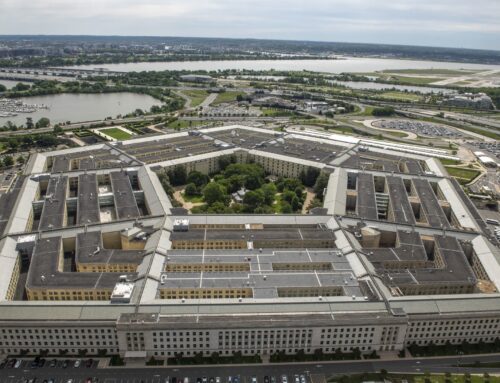The Fiscal Year 2018 Omnibus Appropriations bill includes some funding for so-called “border security” but not as much as the president wanted. At the start of negotiations for the omnibus, he requested $1.6 billion for 74 miles of new wall barriers plus $1.1 billion for border security technology.
When the omnibus finally saw the light of day, there was $641 million for roughly 33 miles of new border fencing that must be of the same fencing technology used for the last ten years. The fancy prototypes President Trump visited earlier this month in California can only be used along a stretch of the border near San Diego. The omnibus also provides $1.1 billion for technology.
This is a long way from the $25 billion the Trump administration has said taxpayers (not Mexico, by the way) should pay for hundreds of miles of wall on the southern border. And since Congress didn’t hand over the full amount, President Trump now wants to pay for it using Pentagon funds. Because, as he said, the military is now “rich.”
From a taxpayers’ perspective, there are many things wrong with this idea. I’m going to break it down to a handful of key points.
- The whole wall plan is a little more than a political placebo. The majority of undocumented immigrants are here because they overstayed their visas. Interdictions of illegal crossings at the border are at historically low levels, and have been decreasing for years. We already have fences or walls on 654 miles of the 696 land miles of the southern border (the rest of the nearly 2,000 mile border is the Rio Grande). DHS has not identified a way to measure if the existing wall is actually increasing border security. As former DHS secretary and Arizona Gov. Janet Napolitano said “Show me a 50 foot wall, and I’ll show you a 51 foot ladder.” Focusing on construction is simply wasteful.
- The military is “rich”, getting a nearly $80 billion boost to this year’s defense spending cap. The omnibus provides so much money the services were looking for ways to stretch out the period of timethey have to spend it. But after crying poor for years, it would be hard for defense hawks to explain swallowing a $25 billion wall sugar pill. Furthermore, the Trump administration just published its National Security and Defense Strategies, which identify expensive priorities like preparing for land wars against peer competitors. There is waste at the Pentagon, but adding wall waste to that doesn’t make sense.
- The president doesn’t get to suddenly decide Pentagon money should be spent on border security: that’s up to Congress, who famously – and appropriately — guards its constitutional prerogatives. The National Defense Authorization Act (NDAA) tells the Pentagon what it may, can, and cannot do, and the Defense appropriations act tells the Pentagon where to spend the money. This is an important principle of separation of powers.
The House Armed Services Committee anticipated this desire to move money from the Pentagon in the direction of constructing a border wall and included a provision in its draft of the NDAA to prohibit using Pentagon funds for the wall. Then, in a game of procedural chess, the Rules Committee – which sets the parameters for floor debate – used a self-executing rule to strip the prohibition when the rule governing debate was adopted by the House. This avoided a politically dicey separate vote to remove the provision. This means there is no statutory prohibition on spending Pentagon dollars on the border wall, but also no direction to do so. (I’ll leave to someone else the analysis of whether this would violate the principle of posse comitatus– prohibiting the military from participating in law enforcement).
Back to the omnibus. While Congress did give itself the room to use Pentagon dollars on the border wall, it ultimately chose not to do so. All of the money in the omnibus for border security is in the Homeland Security portion of the bill. If the president wants to propose a reprogramming of money, or push for his full fiscal year 2019 request for wall funding, he is free to do so. But Congress has the final say on how much, where the money goes, and where it comes from.
Border security should be a priority for Congress, but done wisely and fiscally responsibly. Legislation introduced last year by a bipartisan group of members from border states would require “the most practical and effective technology available along the United States border for achieving situational awareness and operational control of the border.” These are the lawmakers who represent people who live on that border, led by Rep. Will Hurd (R-Texas) who has dismissed the wall as using “3rdcentury technology to solve a 21st century problem”.
Whatever decision Congress makes about investing in border security should be based on evidence and dare I say it, affordability.











Get Social